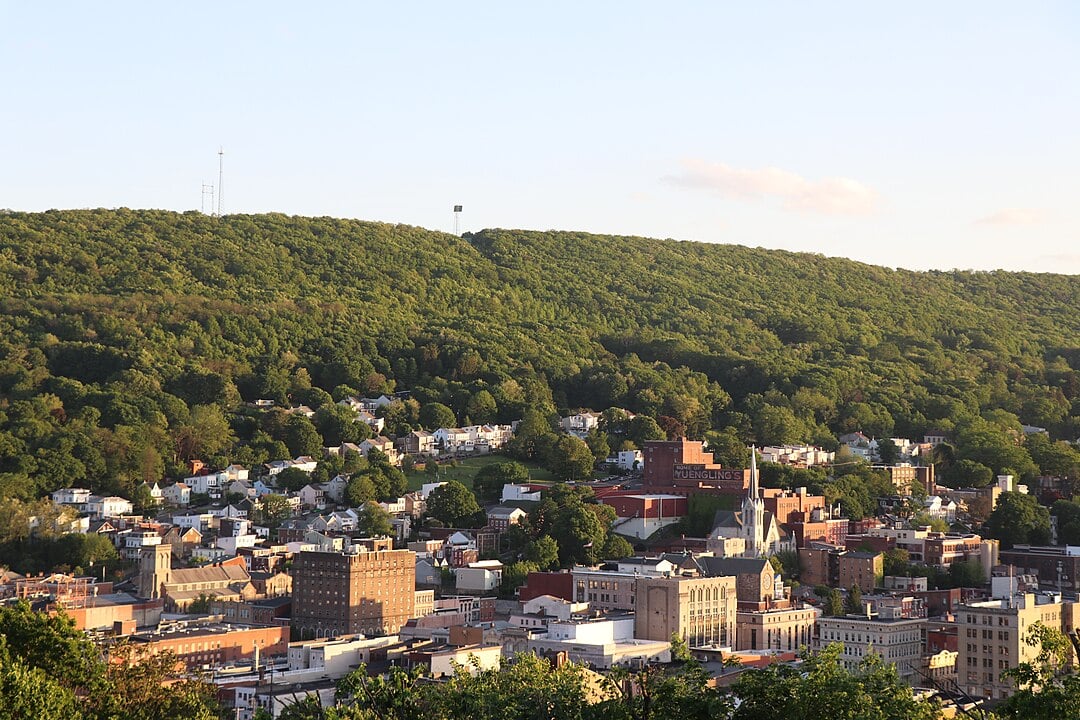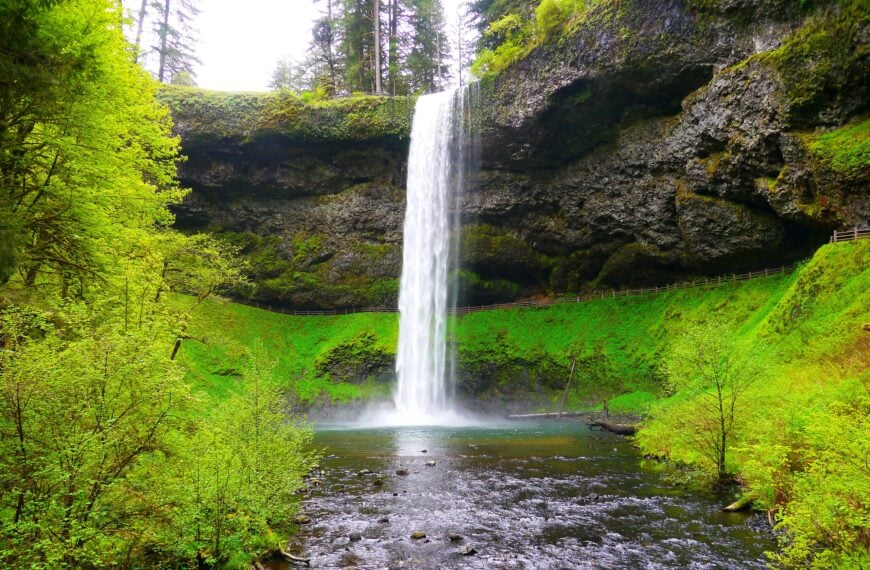
Whenever I crave the crash of cascading water and the camaraderie of a good trail, I set my sights on the Northwest’s smaller towns. They don’t have the bustle of big-name destinations, yet each one hides path after path that leads to misty amphitheaters and fern-draped cliffs.
I’ve lost count of the times a friendly barista pointed me to an unmarked spur or a local brewer shared a map scrawled on a napkin. Waterfalls here feel personal, almost like rewards for choosing the road less traveled.
Trail talk replaces small talk in these communities; muddy boots are perfectly acceptable dinner attire. If you’re eager to lace up and listen to river songs, these nineteen spots deserve a pin on your map.
19. Sandpoint, Idaho: Lake Views and Mountain Falls
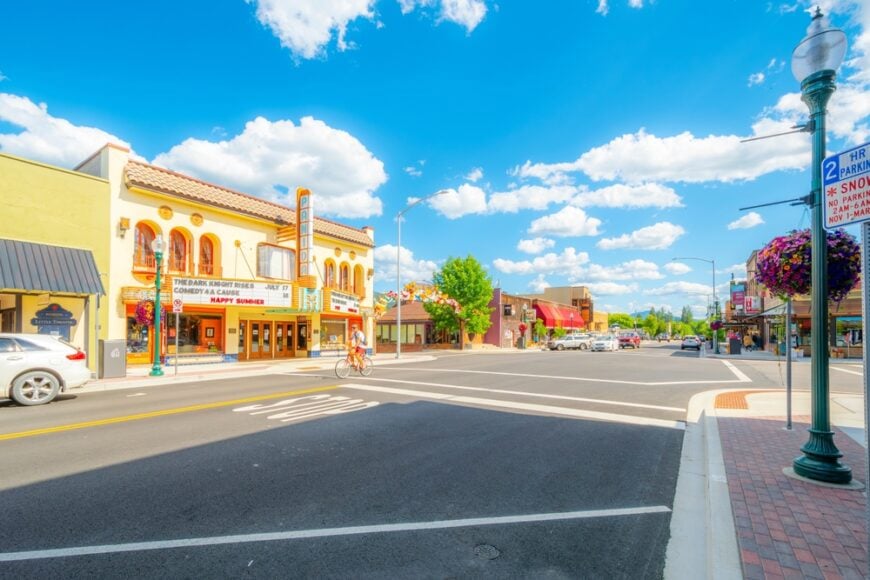
Sandpoint’s claim to fame is usually Lake Pend Oreille, yet what keeps me coming back are the hidden cascades tucked into the Selkirk Mountains just north of town. A quick drive puts you at the trailhead for Granite Falls, where clear water plunges through a granite chute only photographers in the know seem to visit.
After a hike, I like to stroll downtown for an espresso at Evans Brothers and catch sunset from City Beach, watching sailboats drift against rugged peaks. In winter, the conversation shifts to skiing Schweitzer, but locals still snowshoe to frozen falls for that crystalline hush you only hear when everything’s iced over.
Festivals such as the Lost in the ‘50s Car Show give the place a playful spirit that pairs nicely with a day of tail time. Sandpoint makes it effortless if you enjoy balancing lake life with waterfall wanderings.
Sandpoint offers 3-4 bedroom homes priced between $590,000 and $620,000, providing an ideal base for those eager to explore its scenic waterfalls and outdoor adventures.
Where is Sandpoint?
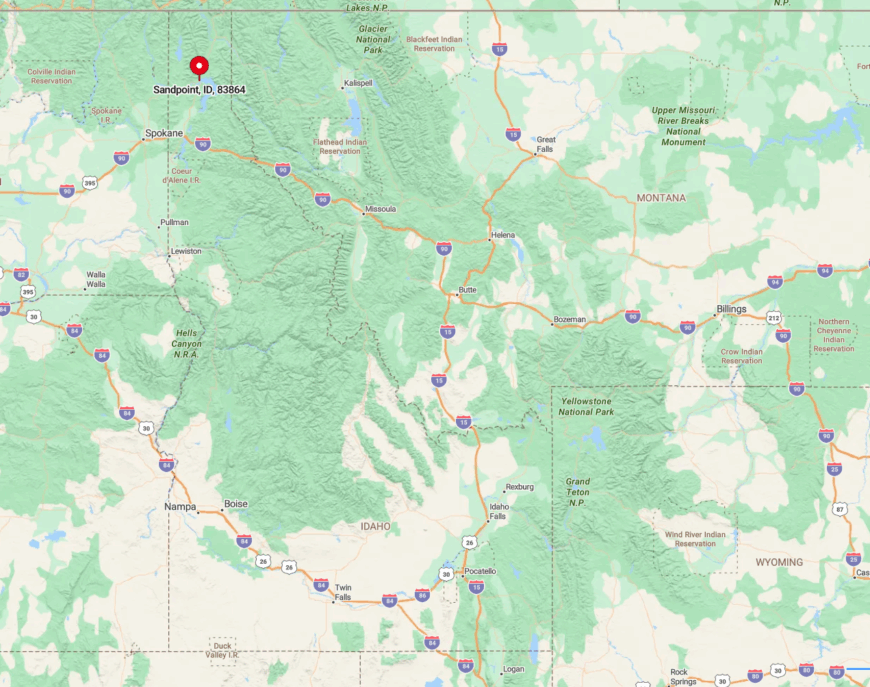
Sandpoint sits in the Idaho Panhandle, roughly 45 miles south of the Canadian border and two hours east of Spokane, Washington. The town hugs the northwestern shore of Lake Pend Oreille, so you’re never far from water, still or rushing.
U.S. Highway 95 delivers you right into downtown, and Amtrak’s Empire Builder stops here if you’d rather let someone else drive. From town, a web of forest roads branches into the Selkirks, placing countless trailheads within an easy half-hour reach.
18. Sedro-Woolley, Washington: Gateway to the Cascades
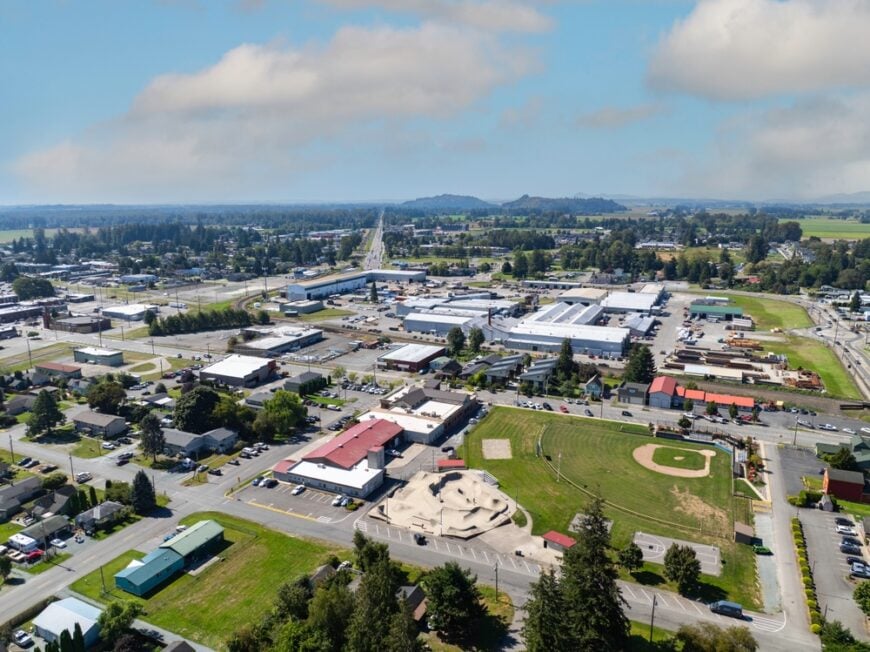
Sedro-Woolley feels like that sturdy trailhead sign at the start of a grand adventure, pointing you toward the drama of the North Cascades National Park.
I often begin my day at the Woolley Market for a handheld breakfast, then head to nearby Skagit Valley Provincial Park’s dual nations of Maple and Lookout Mountain Falls—few realize you can see them both in a single afternoon.
The town celebrates Loggerodeo every Fourth of July, where chainsaws double as paintbrushes in lively carving competitions. When rain rolls in, I duck into the Sedro-Woolley Museum and learn how timber built this place long before hikers arrived.
Evening calls for a pint at District Brewing, where the back patio frames snowy peaks I plan to tackle next. It’s a no-pretense community that happily hands you the keys to the Cascades.
Sedro-Woolley features 3-4 bedroom homes ranging from $620,000 to $650,000, a charming town for those who love hiking to breathtaking waterfalls and enjoying the beauty of nature.
Where is Sedro-Woolley?
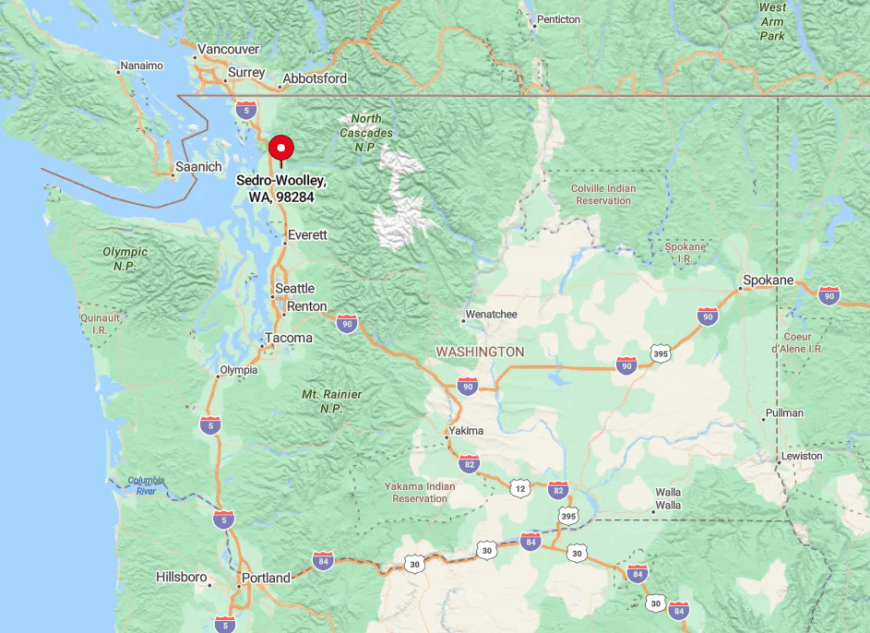
You’ll find Sedro-Woolley in northwestern Washington along State Route 20, about 70 miles north of Seattle and 30 miles southeast of Bellingham. The town straddles the Skagit River, making it a natural launch pad into the North Cascades Highway and its waterfall-laden side roads.
Most visitors drive in via I-5, though cyclists on the Cascade Trail roll right into downtown from Burlington. With the Cascades rising immediately to the east, you can leave your motel at breakfast and be under a waterfall spray before lunch.
17. Baker City, Oregon: Gold Rush History and Natural Beauty
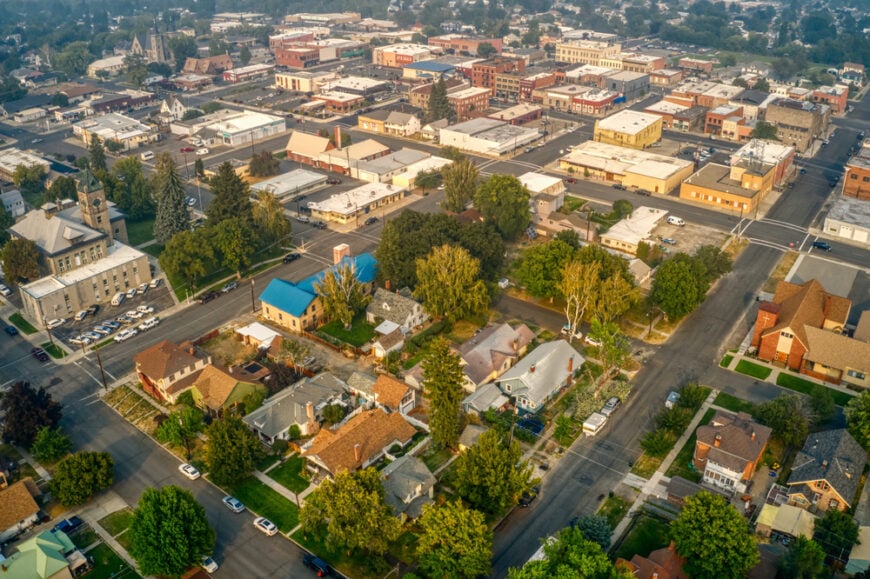
Baker City wears its 19th-century brick storefronts proudly, yet a short jaunt into the Elkhorn Mountains reveals streams cascading through alpine cirques where miners once panned for fortunes. I love hiking to Dutch Flat Falls, a multi-tiered gem shielded by larches that glow gold each autumn.
Afterward, the Oregon Trail Interpretive Center reminds me how grueling travel once was compared to my cushy trail runners. Downtown, Barley Brown’s taps pour award-winning ales perfect for post-hike storytelling.
If you time your visit with the Miners Jubilee, locals reenact stampedes to riches while modern adventurers swap GPS coordinates for secret swimming holes. Baker City proves history and hydrology make surprisingly good trail mates.
Baker City presents 3-4 bedroom homes priced between $290,000 and $320,000, offering an affordable escape for those looking to explore the nearby waterfalls and outdoor trails.
Where is Baker City?

Nestled in eastern Oregon along I-84, Baker City sits about 130 miles northwest of Boise and 300 miles east of Portland. The Powder River meanders through town before rising into the Elkhorns, so the geography transitions quickly from sagebrush to spruce.
I usually exit the interstate at the Historic District and follow Forest Road 5520 to reach the Dutch Flat Trailhead in under 40 minutes. For those without a car, the Greyhound/POINT bus connects Baker City with larger hubs, but a rental opens far more waterfall options.
16. Skamania, Washington: Nature Lover’s Paradise
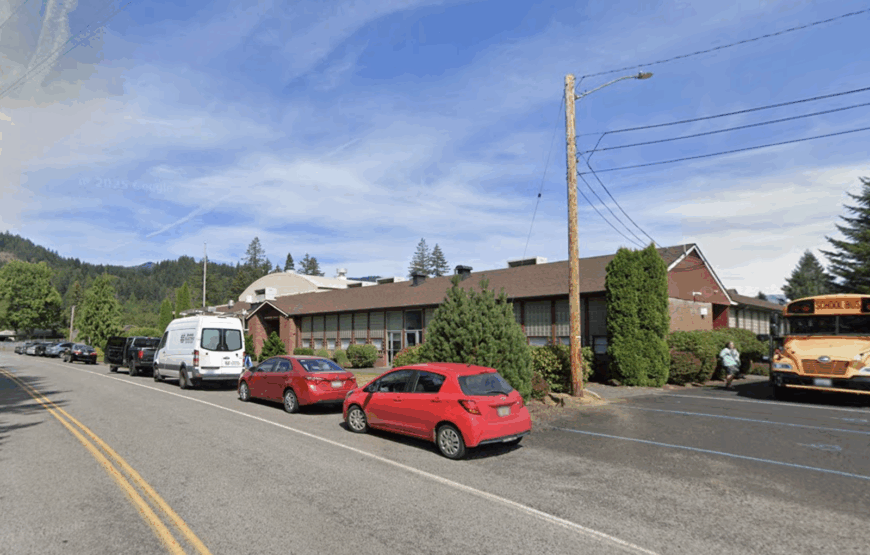
Many folks speed past tiny Skamania on their way to bigger Gorge towns, so I stopped here. Hidden within the surrounding Gifford Pinchot National Forest are falls like Panther Creek and Falls Creek, each delivering that roar you feel in your chest.
The community center’s Friday-night potluck often features foraged huckleberry desserts—proof locals live as closely to the land as their trails suggest. I always pause at the Skamania General Store for a hefty deli sandwich that miraculously stays intact even after miles of switchbacks.
Birders flock here in spring to spy migrating raptors riding the thermals along sheer basalt cliffs. If solitude is your hiking partner, Skamania keeps the crowds at bay.
Skamania offers 3-4 bedroom homes priced between $830,000 and $860,000, perfect for those seeking a luxurious home near some of the most stunning waterfalls in the region.
Where is Skamania?
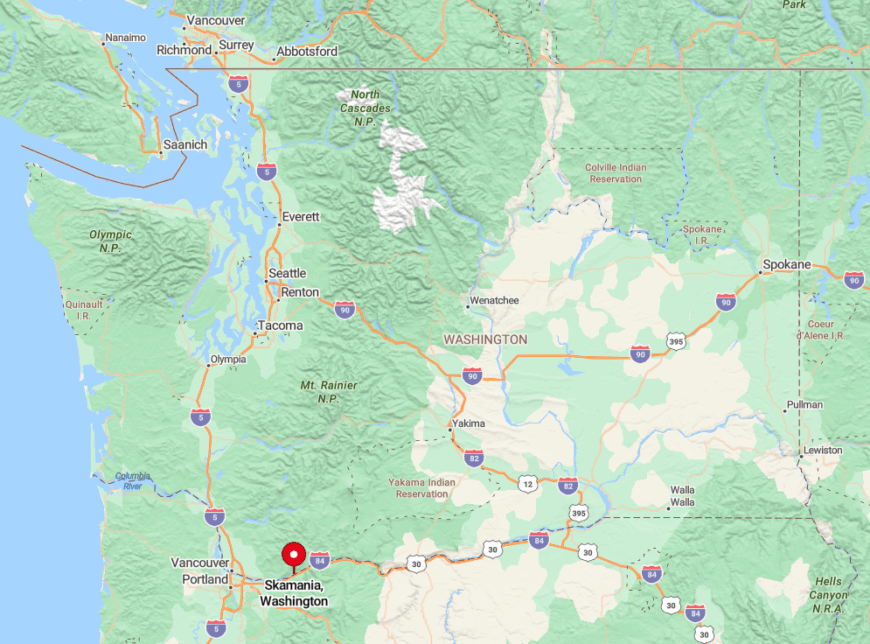
Skamania lies on Washington’s State Route 14, roughly 45 miles east of Vancouver and directly opposite Cascade Locks, Oregon, across the Columbia River. Perched within the Columbia River Gorge National Scenic Area, it boasts immediate access to old-growth forests shattered by waterfalls.
Drivers can cross the historic Bridge of the Gods from the Oregon side or follow SR-14 along dramatic river bends. Once here, forest roads spider north into the Cascades, each ending at a different trailhead and a fresh excuse to chase falling water.
15. Mount Shasta, California: Spiritual Peaks and Cascades
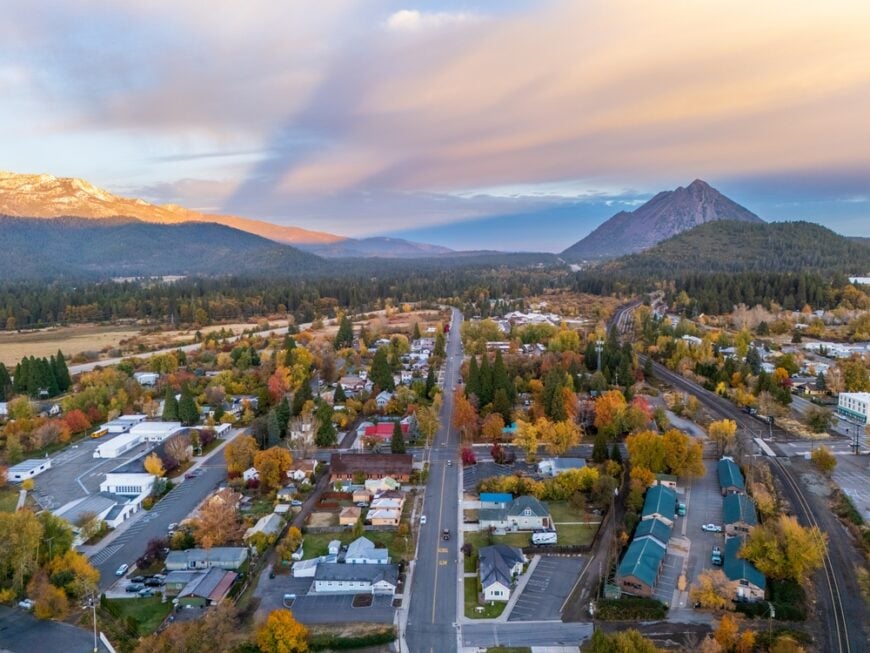
Dominated by its snow-capped namesake volcano, Mount Shasta radiates an energy hikers and mystics both swear they can feel. I often warm up on the two-mile loop to McCloud River’s Middle Falls, then graduate to the steeper trek up Ney Springs Creek to Faery Falls, whose mossy walls look plucked from legend.
Downtown crystal shops mingle with gear outfitters, so you can pick up both sage bundles and bear spray in one stroll. After a day of climbing, I grab a mountain-view pint at Pipeline Craft Taproom and watch alpenglow creep up Shasta’s flanks.
Locals will quietly tell you about Spring Hill’s sunset perch for a panoramic show sans crowds. Between sacred vibes and thundering water, Mount Shasta delivers double doses of awe.
Mount Shasta provides 3-4 bedroom homes in the $440,000 to $470,000 range, an excellent location for those who enjoy hiking to waterfalls while living in a beautiful mountain town.
Where is Mount Shasta?
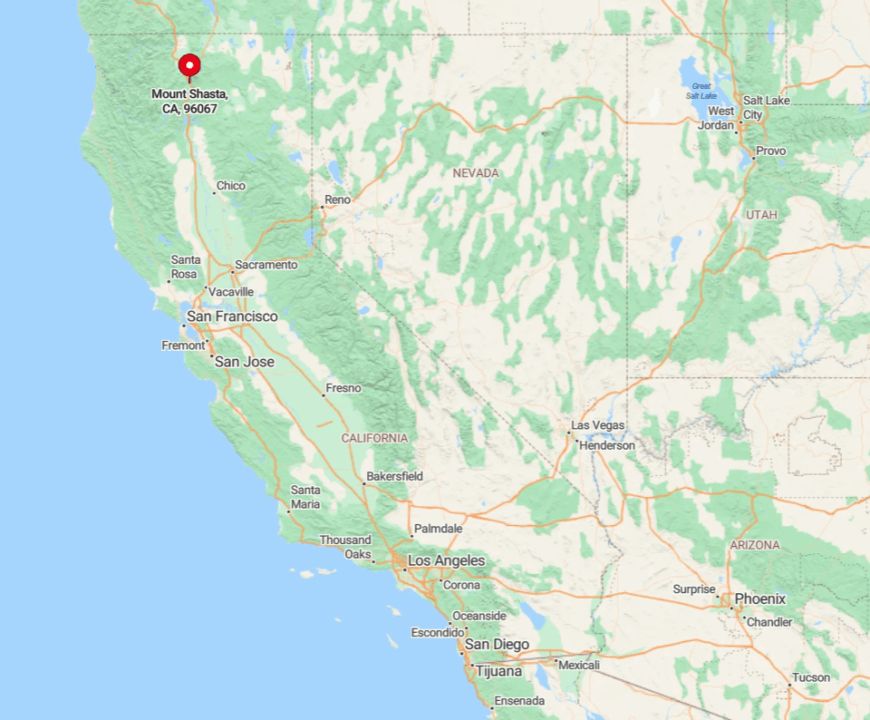
You’ll find the town straddling I-5 in far-northern California, about an hour south of the Oregon border and 60 miles north of Redding. The volcano itself towers to the east, funneling countless creeks down to the Sacramento River headwaters near City Park.
Amtrak’s Coast Starlight stops here daily, and the Siskiyou Scenic Byway offers a dramatic driving approach from Oregon. Trailheads for McCloud River Falls, Castle Lake, and more sit within a 30-minute radius, making logistics refreshingly simple.
14. Josephine, Oregon: Hidden Gems in the Wilderness
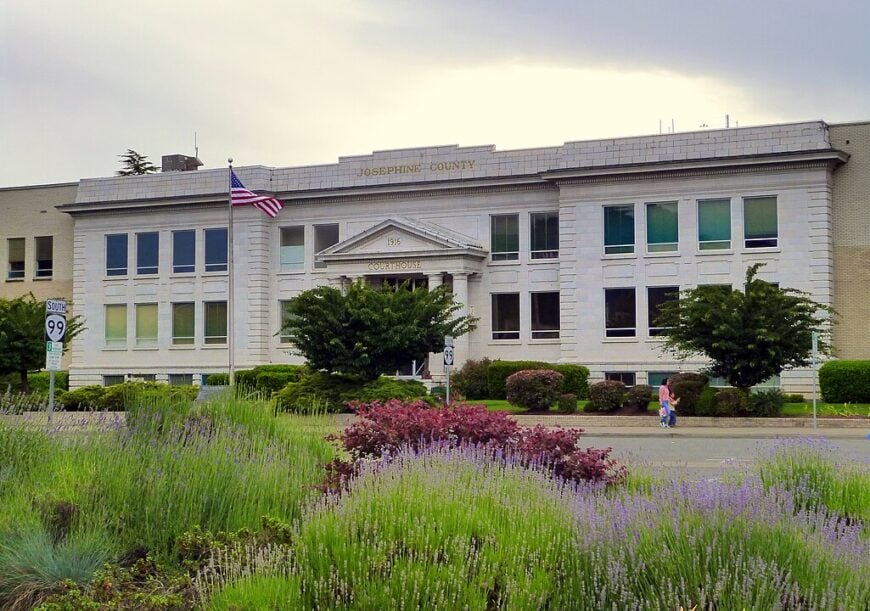
Technically, an unincorporated community rather than a formal town, Josephine is where I go when I want trails to myself and waterfalls with no guardrails. The nearby Illinois River Forks State Park hosts easy strolls to unnamed cascades that keep their secrets thanks to limited signage.
Locals at the Rusk Ranch Nature Center nurture butterflies and dish tips on where to find the day’s best salmonberry patch. I usually camp at Lake Selmac and paddle at dawn before hoofing it to Falls Creek’s tiered veil, visible only after ducking under vine maples.
Evening brings live bluegrass at the Lake Club, where hikers compare scratch marks from curious tree frogs rather than selfies. Josephine proves that the smallest dots on the map sometimes hold the biggest surprises.
Josephine features 3-4 bedroom homes priced between $460,000 and $490,000, providing a scenic base for those wanting to explore the waterfalls and natural beauty of the area.
Where is Josephine?
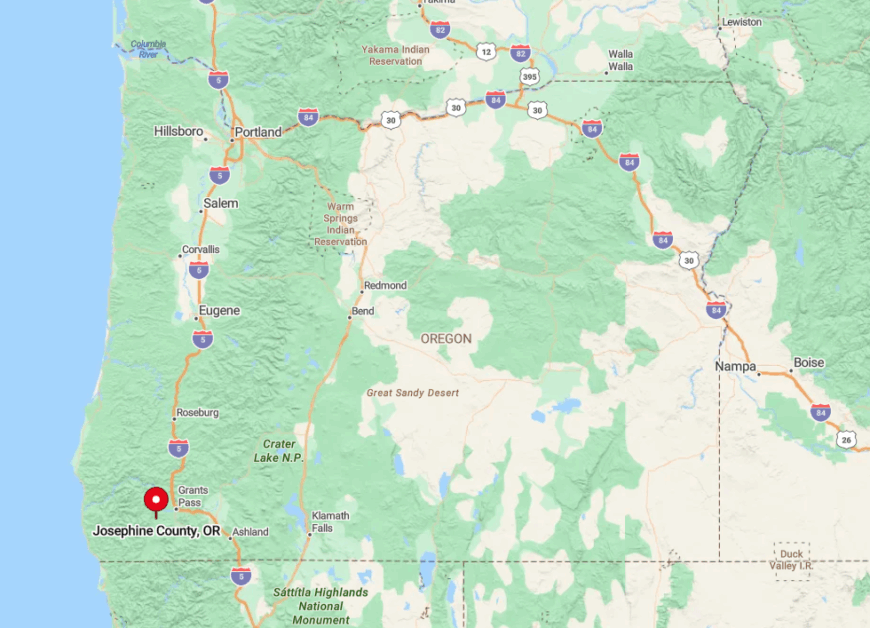
Josephine lies in southwestern Oregon’s Illinois Valley, about 30 miles southwest of Grants Pass via U.S. 199. Hemmed in by the Siskiyou Mountains and the Rogue River-Siskiyou National Forest, its geography is a patchwork of river gorges and serpentine ridges.
Most visitors arrive by car, winding through forested canyons that feel greener with every mile. From town, gravel roads lead deeper into the Kalmiopsis Wilderness, but even roadside pull-offs reveal waterfalls few guidebooks mention.
13. White Salmon, Washington: Adventure Basecamp
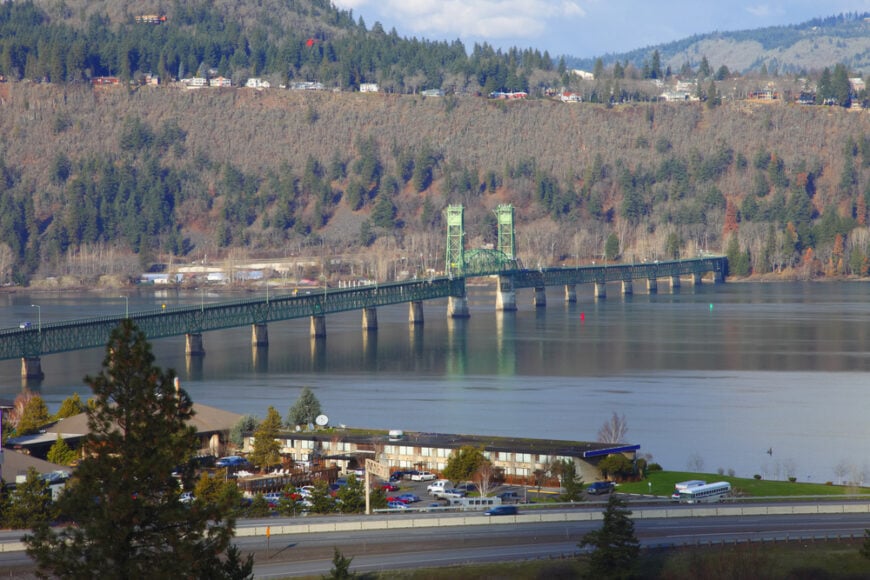
Perched high above the Columbia River, White Salmon hums with kayakers loading boats and hikers swapping GPX files over espresso at Everybody’s Coffee. I’m partial to the Buck Creek Trail, where a short side scramble rewards you with a frothy, unnamed fall framed by lava rock.
Afterward, Everybody’s Brewing pours the Lava Rock Stout—a liquid nod to the area’s volcanic past—and their rooftop deck doubles as the best sunset seat in town. On weekends, the local farmers market overflows with foraged mushrooms perfect for camp skillet dinners.
If wind sports call your name, Hood River’s kite launches sit just across the bridge, but I often stay on this quieter side of the water. White Salmon serves high energy without high crowds.
White Salmon offers 3-4 bedroom homes priced between $750,000 and $850,000, a stunning location for those looking to immerse themselves in nature while enjoying nearby waterfalls.
Where is White Salmon?

The town sits on Washington’s SR-14, directly opposite Hood River, Oregon, roughly 70 miles east of Portland. Its cliff-top perch grants sweeping Gorge vistas and near-instant access to the Gifford Pinchot National Forest.
Drivers cross the Hood River Bridge (toll) or wind along SR-14 to arrive, while the Mount Adams Transit bus links White Salmon with nearby towns. From downtown, it’s less than 20 minutes to trailheads that climb toward Mount Adams and spill out at hidden waterfalls like Rattlesnake Falls.
12. Cascade Locks, Oregon: Small Town with Grand Views
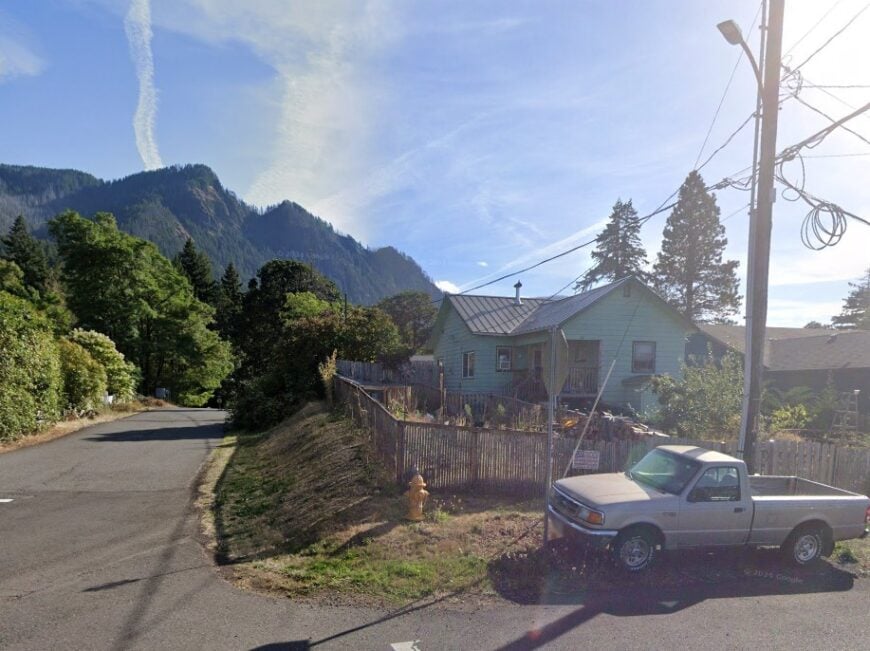
Cascade Locks may be one of the smallest incorporated towns in Oregon, yet it punches above its weight with waterfall access, thanks in part to the Pacific Crest Trail strolling right through Main Street.
I warm up with the easy Gorge 400 Trail before tackling the steeper climb to Dry Creek Falls, where columnar basalt frames a picture-perfect 75-footer. In town, the Thunder Island Brewing patio hovers over the Columbia, offering front-row seats to passing barges and the Bridge of the Gods.
Annual events like the Bridge of the Goddess Half Marathon entice runners, but I think the real victory lap is a plate of fish and chips at Brigham Fish Market. Wherever you roam, the river’s steady roar underscores every conversation here.
Cascade Locks presents 3-4 bedroom homes in the $360,000 to $390,000 range, ideal for those wishing to experience both the picturesque waterfalls and hiking trails in this beautiful town.
Where is Cascade Locks?
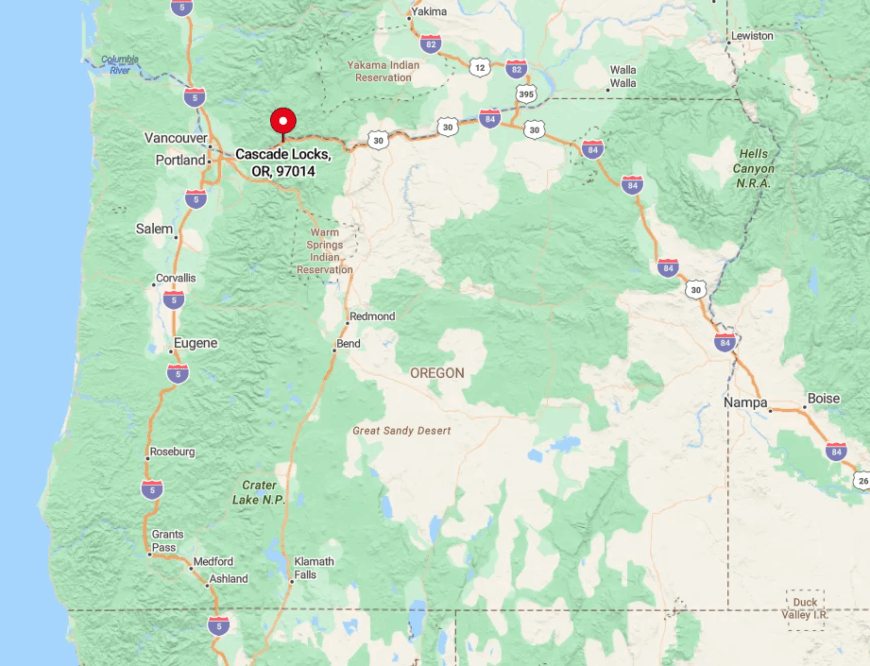
Located 45 miles east of Portland on I-84, Cascade Locks straddles one of the narrowest stretches of the Columbia River Gorge. The river carves steep basalt walls, creating ideal conditions for dozens of nearby waterfalls.
Amtrak’s Columbia Gorge Express and Greyhound stop here, and cyclists arrive via the Historic Columbia River Highway State Trail. Once in town, trailheads begin within walking distance, making a car optional for the determined waterfall chaser.
11. Bigfork, Montana: Artistic Enclave by Flathead Lake
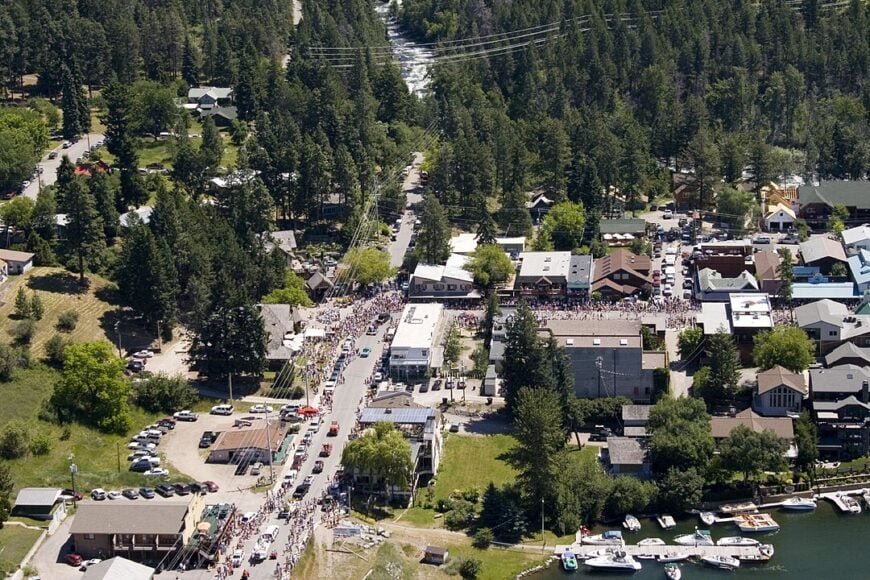
Bigfork’s art galleries and playhouse might lure culture hounds, but I come for the Swan River Nature Trail, whose gentle path leads to the thundering “Wild Mile” rapids and hidden offshoots to pocket falls. The juxtaposition of serene Flathead Lake against rushing mountain water never fails to surprise first-timers.
After a hike, I wander Electric Avenue, sampling huckleberry ice cream and peeking into metal-work studios that echo with the clang of creativity. If you’re here in spring, the Bigfork Whitewater Festival transforms the river into a spectator’s carnival of kayaks and cheers.
Evening brings live music at The Raven, where the deck lights glimmer across the lake like a string of pearls. In Bigfork, every form of water seems to fuel art and adventure.
Bigfork offers 3-4 bedroom homes priced between $850,000 and $950,000, making it a luxurious destination for waterfall enthusiasts and outdoor lovers.
Where is Bigfork?
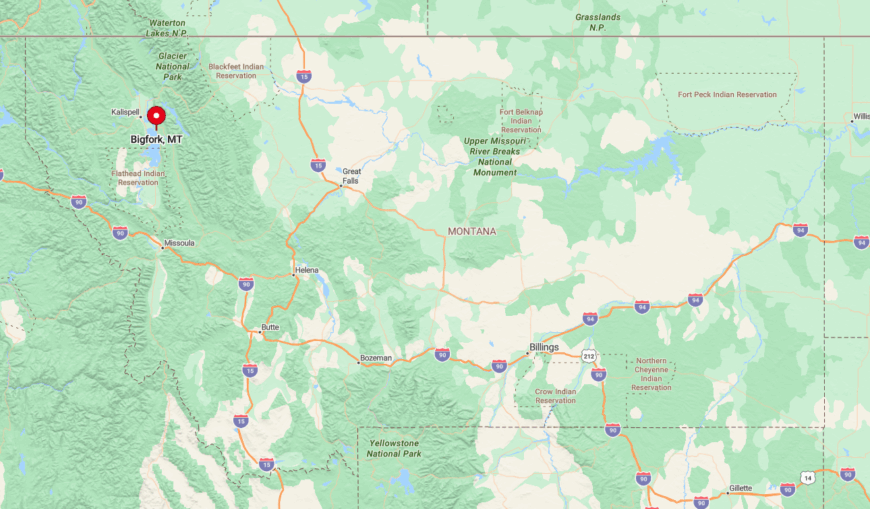
Bigfork nestles on the northeast shoreline of Flathead Lake in northwestern Montana, about 20 miles south of Kalispell on Highway 35. The Swan and Flathead rivers meet here, funneling glacial runoff from the Mission and Swan ranges.
Glacier Park International Airport provides the quickest access, a scenic half-hour drive flanked by cherry orchards. Once settled, you’re within an hour of Jewel Basin’s waterfall-lined alpine bowls and only steps from the Wild Mile.
10. Ashland, Oregon: Shakespeare and Scenic Waterways
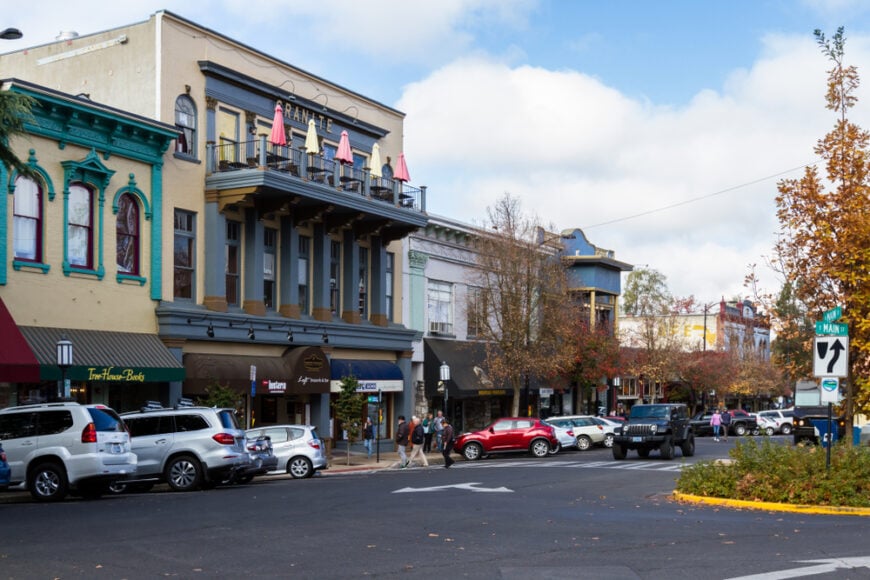
Most travelers associate Ashland with its famed Shakespeare Festival, yet the surrounding Siskiyou Mountains host curtain-raising waterfalls that deserve standing ovations too.
My favorite intermission involves hiking to Mill Creek Falls, where twin plumes tumble into a basalt amphitheater worthy of the Bard. Back in town, I refuel at Noble Coffee and wander Lithia Park, whose lower duck ponds feed into Ashland Creek’s series of miniature cascades.
Between plays, bookstores like Bloomsbury hand-sell trail guides annotated by stagehands who double as weekend explorers. Come autumn, golden big-leaf maples frame every watercourse, making even a stroll to the park’s Japanese Garden feel cinematic.
Ashland reminds me that drama isn’t confined to the stage. Ashland provides 3-4 bedroom homes in the $540,000 to $570,000 range, offering easy access to nearby waterfalls and outdoor recreation in this vibrant, scenic town.
Where is Ashland?
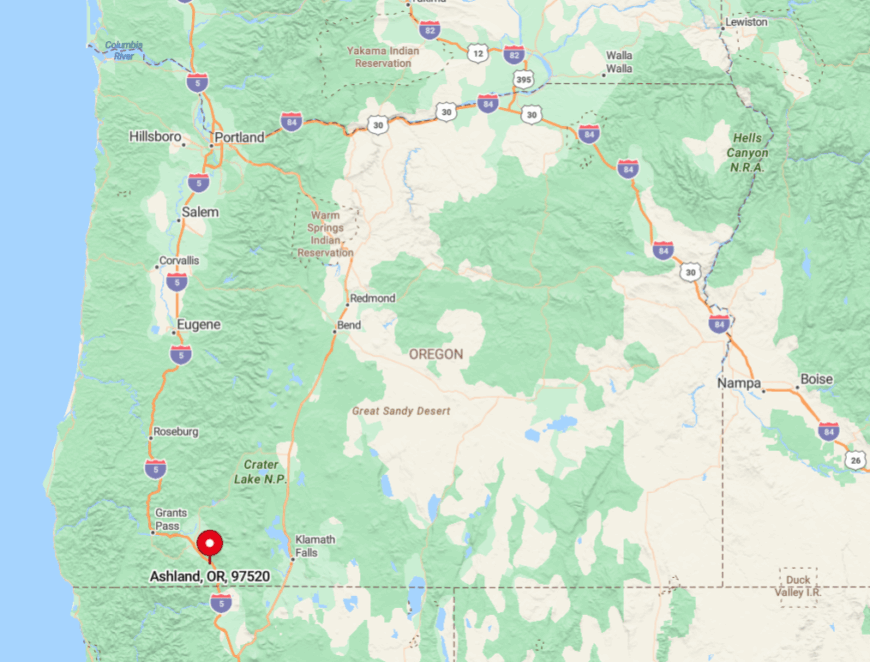
Set along I-5 in southern Oregon, Ashland lies 15 miles north of the California border and 12 miles south of Medford’s airport. The town rests in the Rogue Valley, with the Siskiyou Crest rising immediately to the south and east.
A city trolley shuttles visitors from downtown to trailheads at Lithia Park and beyond, while drivers can reach Mill Creek Falls via Highway 62 in about an hour. The valley’s varied elevations put snow-fed waterfalls within easy day-trip range all year.
9. Winthrop, Washington: Old West Vibes and Hidden Falls
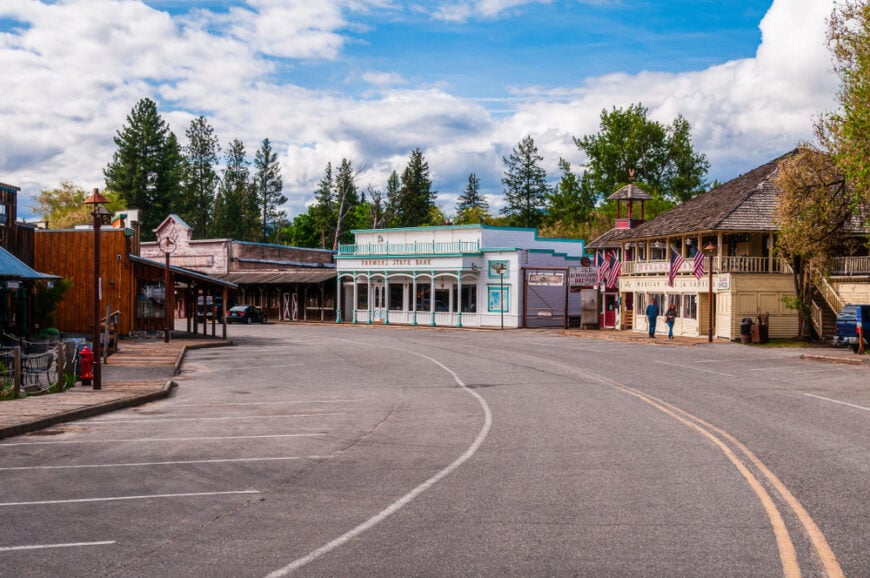
Winthrop’s boardwalks and wooden facades make you think you’ve stepped into a spaghetti western, but the surrounding Methow Valley swaps tumbleweeds for larch-lined waterfalls.
I often bike the Methow Trails system until I hear the distant rush of water, then follow my ears to spots like Falls Creek Falls—a three-tiered beauty rarely busy even in peak season. Afterward, I order fennel sausage pizza at East 20 Brewing, where locals tie their skis to the railing come winter.
The Shafer Historical Museum adds context, displaying photos of the valley when irrigation ditches, not singletrack, dominated conversation. Each March, the hot-air balloon festival paints the sky while snowmelt swells neighboring cascades.
Winthrop pairs Western flair with watery secrets. Winthrop features 3-4 bedroom homes priced between $230,000 and $260,000, an affordable option for those seeking to explore the area’s stunning waterfalls and natural beauty.
Where is Winthrop?
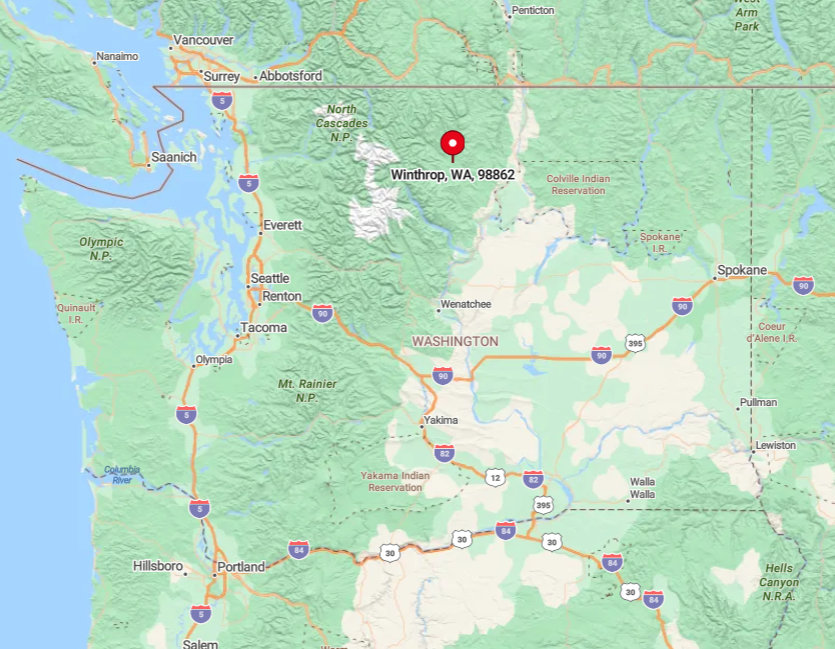
Winthrop sits along Highway 20 in north-central Washington’s Methow Valley, roughly 180 miles from Seattle via Stevens Pass or 240 via the North Cascades Highway when open.
The town is boxed in by the Okanogan-Wenatchee National Forest and the Sawtooth Wilderness, ensuring dramatic vertical relief and plentiful falls. Most visitors arrive by car, though adventurous cyclists tackle the epic Cascade Loop.
From downtown, Goat Peak and Falls Creek trailheads are each a 15-minute drive, making early-morning waterfall runs feasible before the espresso cools.
8. Dunsmuir, California: A Mountain Town with Mossbrae Falls
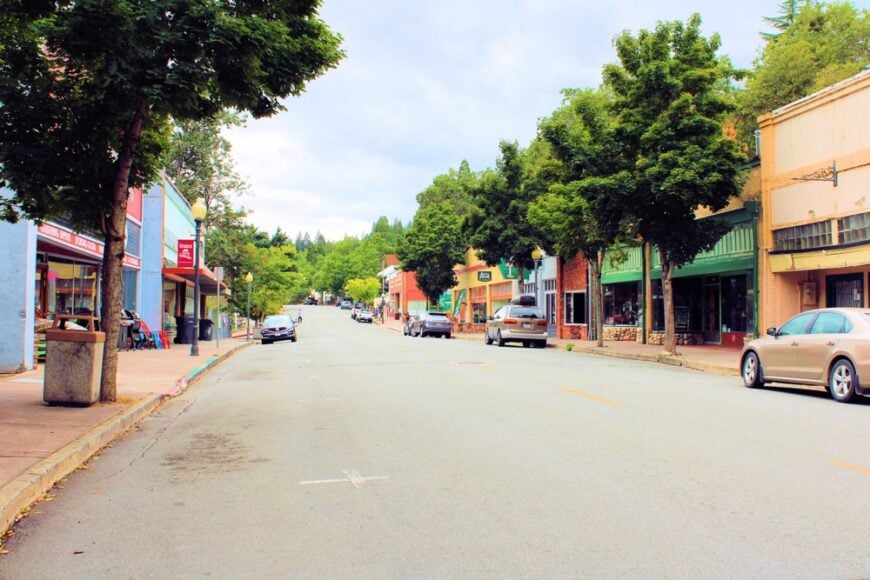
Locals in Dunsmuir like to brag that they have the “best water on Earth.” After tasting it straight from the town fountain, I believe them. The same pristine springs feed Mossbrae Falls, a 350-foot-wide curtain of rivulets that seems to materialize from the ivy-coated canyon wall.
I always stop at YAKS for a cinnamon-roll burger (yes, cinnamon-roll bun) before strolling the river trail lined with cast-iron lampposts, a throwback to Dunsmuir’s railroad heyday. Anglers swear by the Upper Sacramento’s trout runs, while rock climbers tackle basalt columns nearby Castle Crags.
Summer evenings bring live jazz to the Dunsmuir Brewery Works patio, where the waterfall’s cool mist still clings to my hair. Everything about this town flows—water, trains, music, conversation.
Dunsmuir offers 3-4 bedroom homes in the $240,000 to $270,000 range, perfect for nature lovers who want to experience beautiful waterfalls in a charming small-town setting.
Where is Dunsmuir?
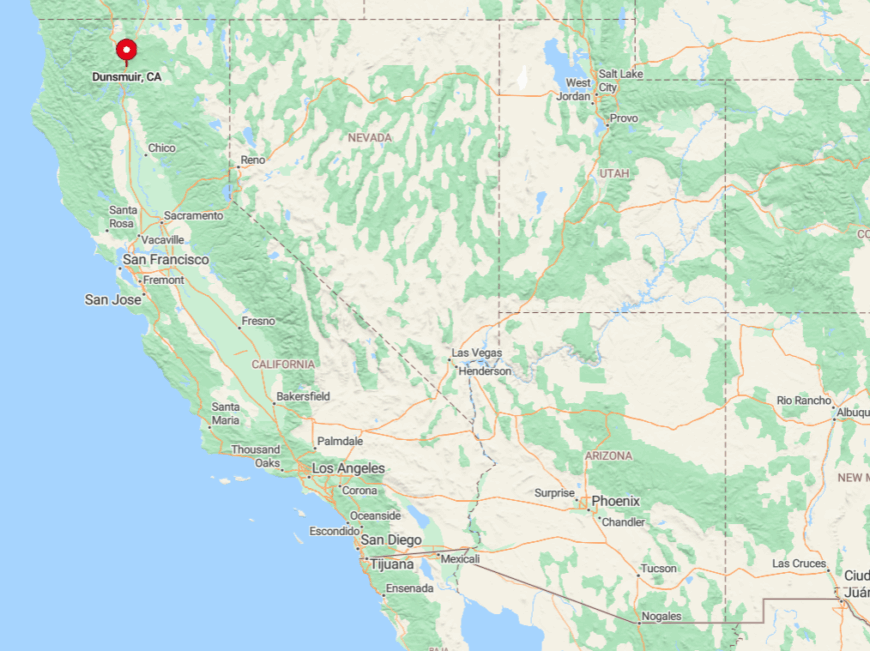
Dunsmuir sits along I-5 in Northern California’s Shasta Cascade region, about five miles south of Mount Shasta City and 60 miles north of Redding. Even in July, the Sacramento River slices right through town, creating a narrow canyon that captures cool air.
Amtrak’s Coast Starlight stops at the historic depot, so car-free travelers can still reach the trails. The unofficial path to Mossbrae Falls from downtown now includes a new pedestrian suspension bridge, removing the need to walk on active rail tracks.
7. Sisters, Oregon: Rustic Charm Near Cascading Waters
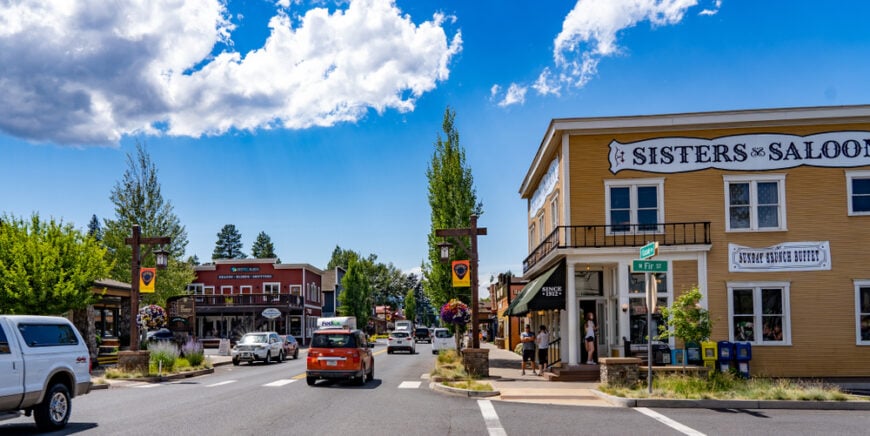
With its false-front buildings and unobstructed views of the Three Sisters peaks, Sisters feels like a western movie set blessed by geologists. Twenty minutes up Highway 242, Proxy Falls plunges 226 feet through a lava field shrouded in moss, a scene that never fails to silence a crowd.
I usually caffeinate at Sisters Coffee Company and browse quilt shops that lure creative souls worldwide each summer. Mountain bikers hit the Peterson Ridge Trails while horseback riders clip-clop down Pine Street, proving multiple ways exist to earn your waterfall pastry.
The annual Sisters Folk Festival turns the whole town into a stage, with musicians often sneaking in morning hikes before soundcheck. Few places marry art, adventure, and alpine water quite like Sisters.
Sisters presents 3-4 bedroom homes priced between $820,000 and $850,000, offering a scenic and luxurious location for those who enjoy hiking to nearby waterfalls.
Where is Sisters?
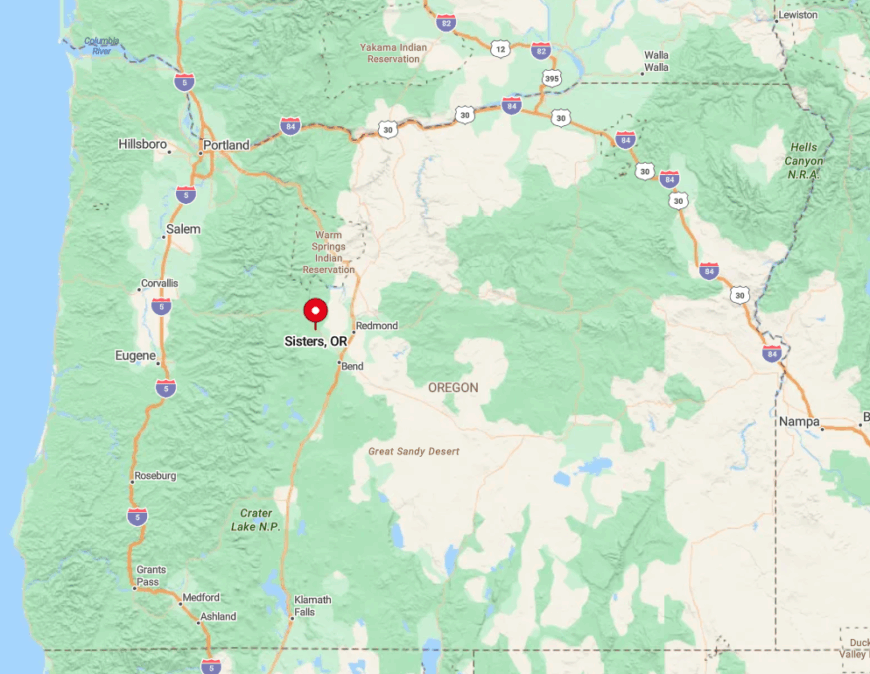
Sisters anchors the eastern flank of Oregon’s Cascade Range along Highway 20, about 22 miles northwest of Bend and 100 miles east of Eugene via scenic Highway 126. Ponderosa-pine forests yield quickly to volcanic ridges, funneling snowmelt into the dramatic falls you see today.
Drivers access Proxy Falls via the historic McKenzie Pass-Santiam Pass Scenic Byway, which is open seasonally due to snow. Once the pass closes, Sahalie and Koosah Falls off Highway 126 provide year-round waterfall fixes just 40 minutes from town.
6. Wallace, Idaho: Silver Mining Heritage and Nature
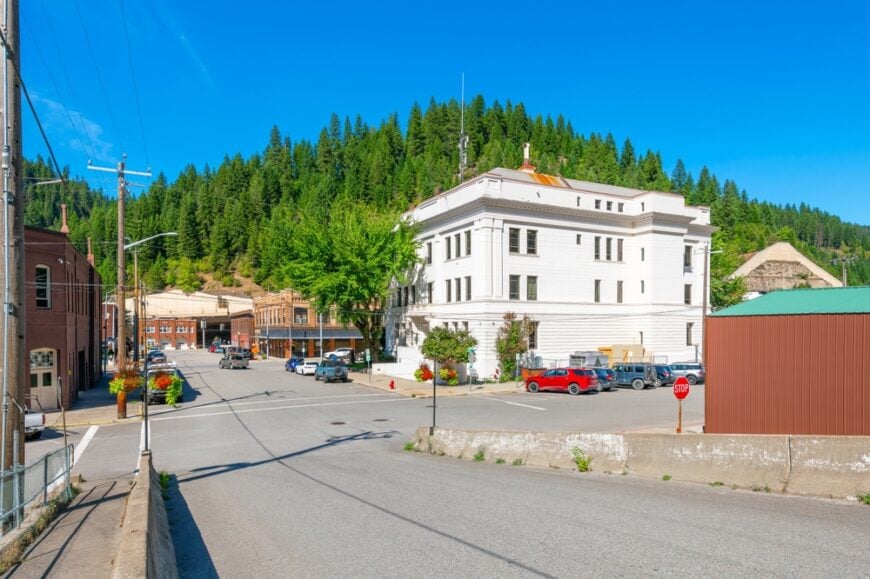
Every building in Wallace is on the National Register of Historic Places, yet the mountains above it feel untouched, hiding cascades miners probably used for their gritty bathwater.
Pulaski Tunnel Trail, my go-to, ends at a dramatic mine entrance beside a 50-foot waterfall, blending human and natural history in one satisfying loop. After descending, I reward myself at City Limits Pub with a huckleberry-infused porter brewed from local spring water.
If you’re lucky, a resident might whisper directions to Revett Lake’s outlet falls—no signposts, just echoing water guiding you. The town’s quirky Center of the Universe manhole cover reminds me that exploration here is half literal and tongue-in-cheek.
Wallace teaches that the best treasures aren’t always silver. Wallace features 3-4 bedroom homes priced between $270,000 and $300,000, an excellent option for those looking to explore the waterfalls and outdoor beauty of the region.
Where is Wallace?
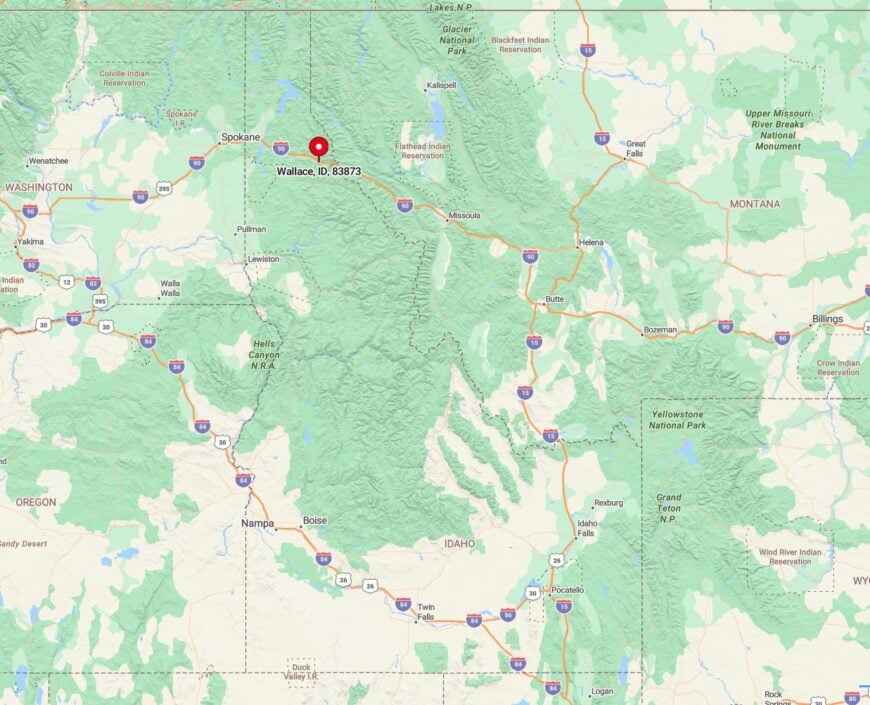
Wallace occupies a narrow gulch along I-90 in Idaho’s Silver Valley, about 50 miles east of Coeur d’Alene and 80 miles west of Missoula. Steep, forested slopes rise on every side, channeling snowmelt into countless unnamed cataracts.
You can arrive via interstate bus, but a car gives freedom to roam Forest Road 456 into the Coeur d’Alene Mountains. Trailheads begin within a mile of downtown, so even folks staying at the historic Ryan Hotel can squeeze in a pre-breakfast waterfall jaunt.
5. McCloud, California: Historic Mill Town by the Falls
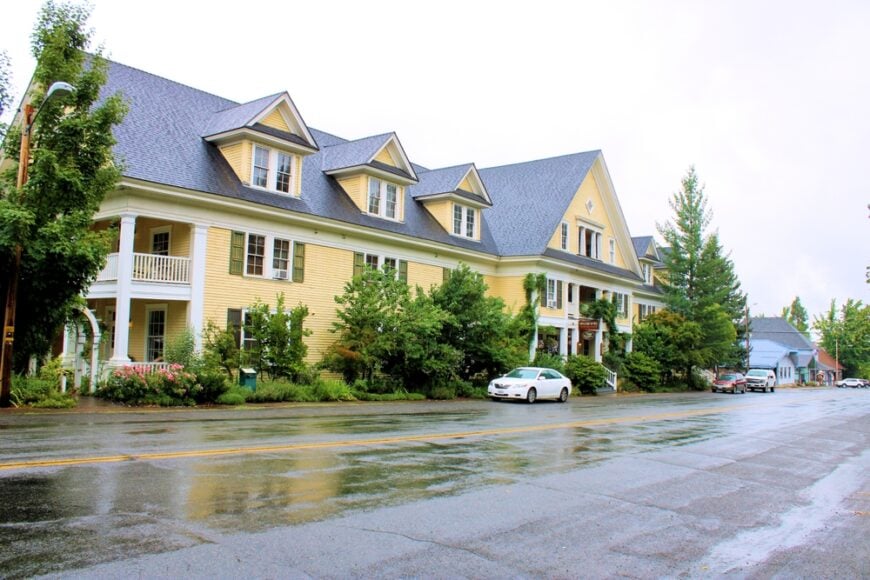
McCloud retains the tidiness of its lumber-company roots, complete with clapboard homes now transformed into cafés and B&Bs. The real draw, though, is the three-tiered McCloud River Falls trail, where each segment—Lower, Middle, and Upper—offers a distinct pool for summertime plunges.
Between hikes, I browse the McCloud Mercantile’s vintage candy jars and pick up a meatloaf sandwich hearty enough for a lumberjack. The annual Mushroom Festival each spring sees foragers toting baskets brimming with morels gathered near creekside cascades.
Evenings often end with open-mic nights at the White Mountain Café, where the whir of the espresso grinder harmonizes with distant river murmur. McCloud proves old mill towns can reinvent themselves around watery wonders.
McCloud offers 3-4 bedroom homes in the $360,000 to $390,000 range, an ideal location for those who love hiking to waterfalls and enjoying this quiet town’s natural beauty.
Where is McCloud?
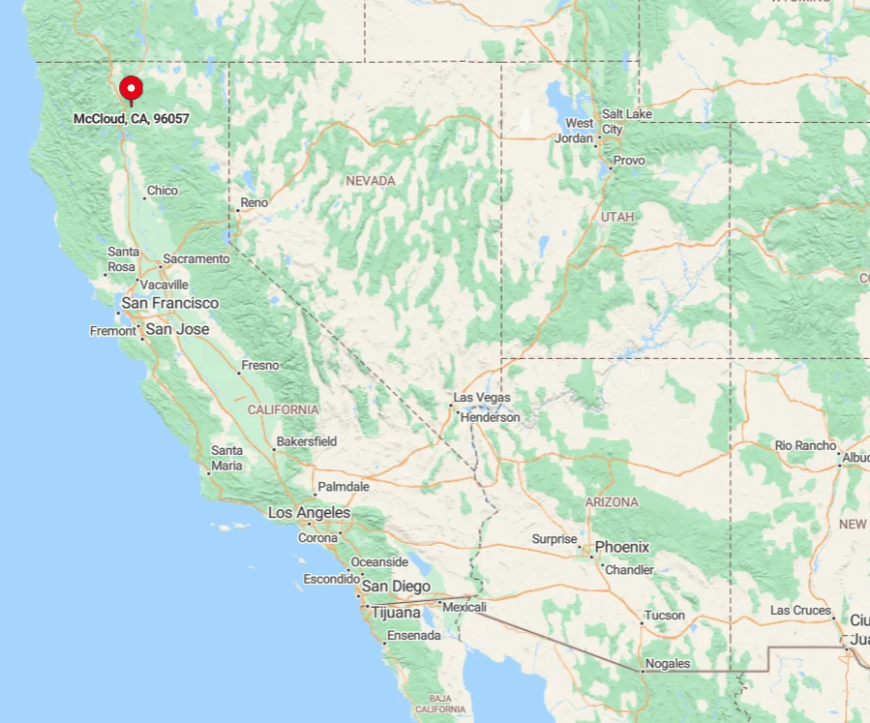
The town rests on Highway 89 in Siskiyou County, California, 15 miles east of Mount Shasta and just off the Volcanic Legacy Scenic Byway. Perched on the south bank of the McCloud River, it sits where volcanic plateaus funnel meltwater toward leafy canyons.
Most travelers reach McCloud via I-5, then wind east beneath black-cottonwood canopies. Once there, the Falls trailhead is a simple 10-minute drive, with marked parking lots at each cascade.
4. Stevenson, Washington: Heart of the Columbia Gorge
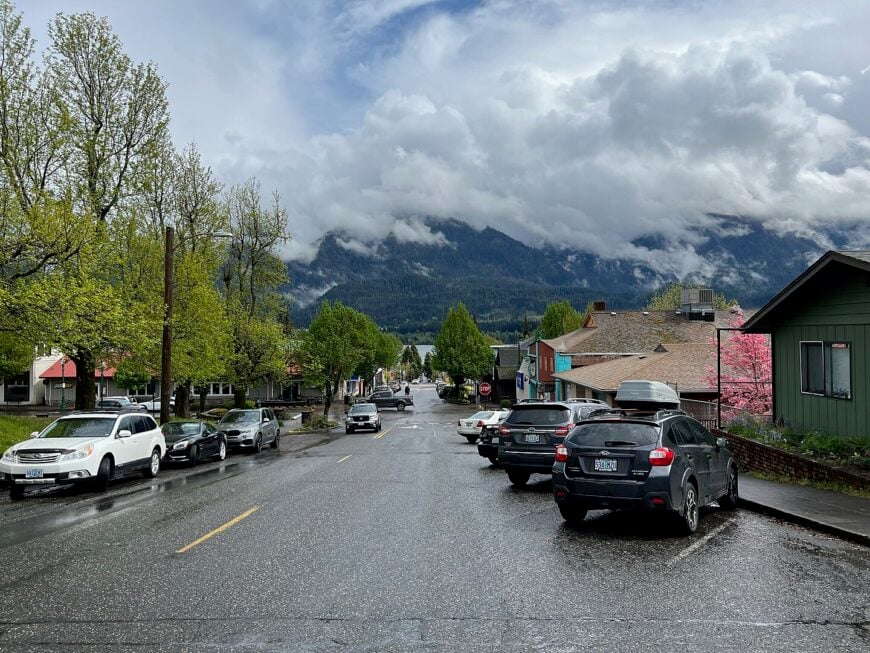
Stevenson greets visitors with the scent of pine and the faint hiss of barge traffic, an oddly soothing cocktail I now associate with adventure. I start mornings at Compass Coffee before hiking the Cape Horn Loop, whose 250-foot seasonal waterfall ribbons down sheer basalt walls overlooking the Columbia.
Back in town, the Columbia Gorge Interpretive Center offers a life-size replica of a fishwheel, reminding me the river’s bounty predates selfies by centuries. Summer Fridays host the George Blues & Brews Fest, where guitar riffs echo off canyon walls like distant thunder.
Don’t skip Skamania Lodge’s zip-line tour—it sails above Hardy Creek Falls, giving a mid-air waterfall view few ever experience. Stevenson balances small-town ease with grand-scale scenery.
Stevenson presents 3-4 bedroom homes priced between $830,000 and $860,000, providing an upscale base for exploring the stunning waterfalls and outdoor adventures nearby.
Where is Stevenson?
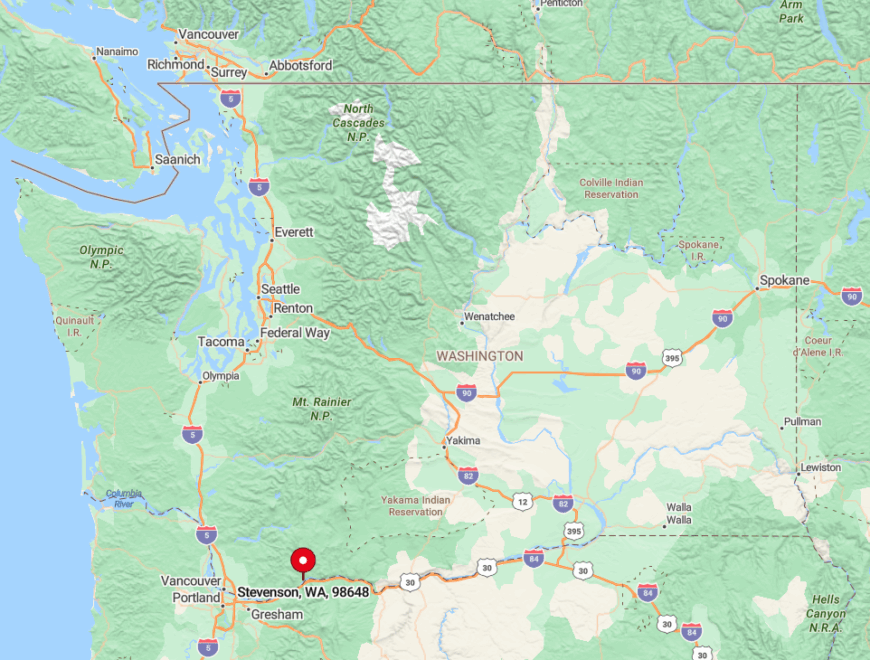
Located on Washington’s SR-14, Stevenson sits 45 miles east of Vancouver and directly across from Cascade Locks, Oregon. The Columbia River Gorge narrows here, compressing wind and water alike, which is why kite-sailors and waterfalls both flourish.
Drivers can cross the Bridge of the Gods from Oregon or follow SR-14’s cliff-hugging curves. Once parked, trailheads such as Wind Mountain and Dry Creek lie within a 10-mile radius, ensuring a waterfall fix is never far.
3. Joseph, Oregon: Artistry in the Shadow of the Wallowas
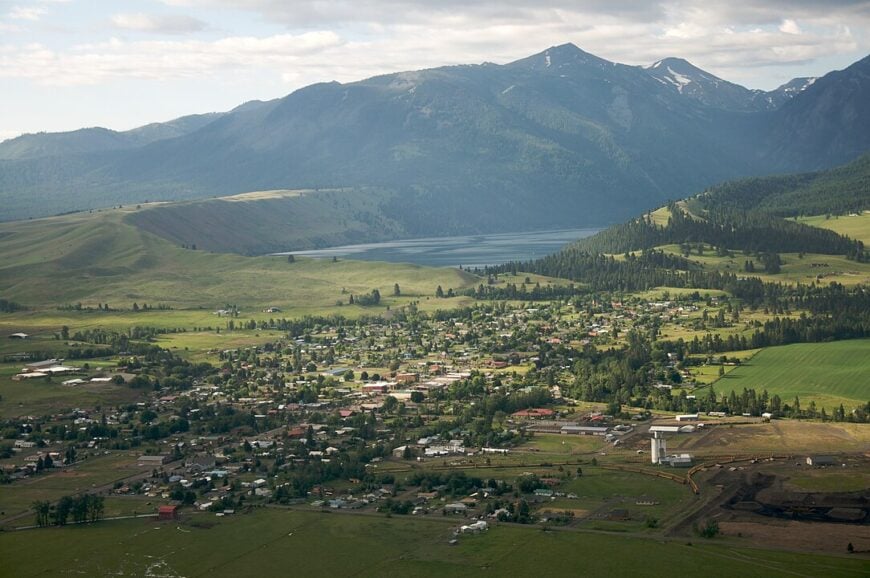
Joseph may have more bronze statues per capita than people, yet its greatest works of art are arguably the waterfalls tumbling off the Wallowa Mountains. I often trek the Ice Lake Trail, pausing at cascades like Adam Creek Falls, whose silver plume slices through subalpine firs on its race to the valley floor.
Afterward, Terminal Gravity Brewery’s riverside patio coaxes weary legs into staying for one more pint beneath elk-horn chandeliers. Main Street galleries showcase everything from landscape oil paintings to hand-tooled saddles, many inspired by those very waterfall vistas.
Time your visit for the Bronze, Blues & Brews Festival, and you’ll see how art, music, and mountain water mingle in this eastern Oregon enclave. Joseph proves wilderness can spark creativity as powerfully as any studio.
Joseph offers 3-4 bedroom homes in the $460,000 to $490,000 range, an inviting place for waterfall enthusiasts looking to immerse themselves in nature’s beauty.
Where is Joseph?
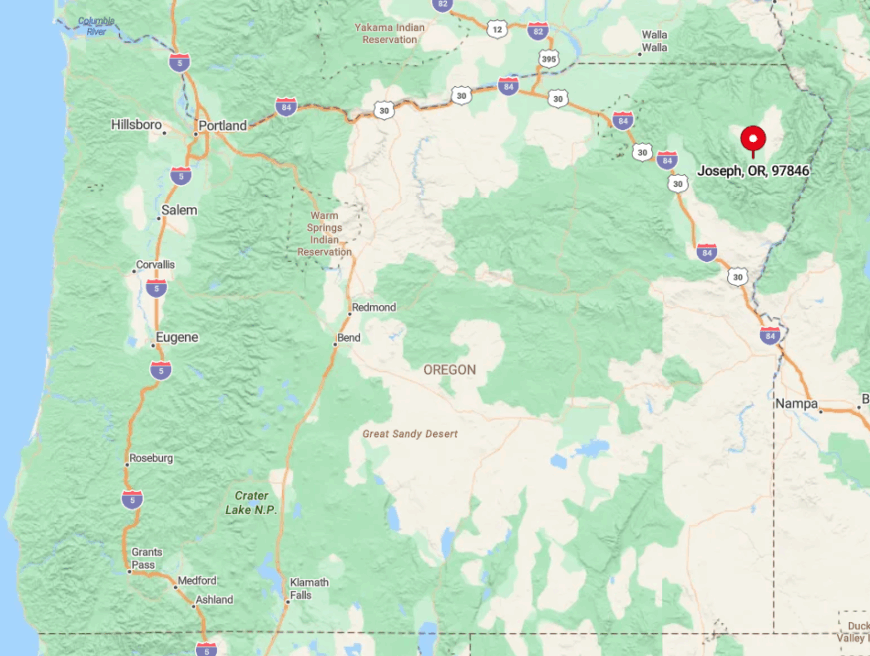
Joseph anchors the northeast corner of Oregon, 70 miles east of La Grande via Highway 82 and at the end of the Hells Canyon Scenic Byway. The town nestles against the Wallowa Range, often dubbed the “Alps of Oregon,” whose glacial valleys spawn countless cataracts.
Most travelers drive the winding two-lane highway, though small planes land nearby Enterprise. From Joseph, the Wallowa Lake Trailhead sits less than five miles south, making high-alpine waterfalls accessible in a single morning.
2. Silverton, Oregon: Gateway to the Trail of Ten Falls
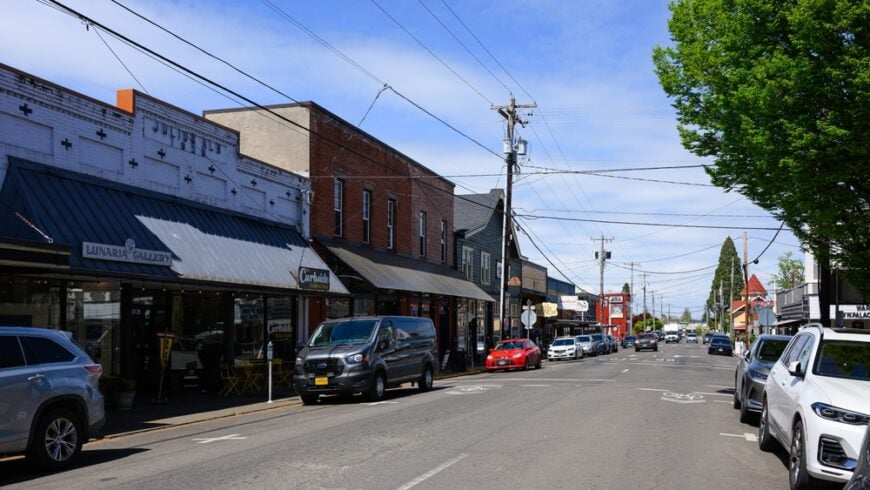
Silverton’s downtown murals hint at the visual feast waiting just 20 minutes away in Silver Falls State Park, where ten waterfalls punctuate a lush, 7-mile loop. The crown jewel is South Falls, whose 177-foot ribbon lets you duck behind the spray like a cinematic secret passage.
I like to bookend the hike with pastries from Silver Creek Coffee House and a pint at Silver Falls Brewery, whose pub dog greets hikers like long-lost friends. The Oregon Garden, a short walk from downtown, hides its miniature cascades that sparkle during the annual Christmas light show.
Each August, the Homer Davenport Community Festival honors the famed political cartoonist with parades and a waterfall-themed 10 K. Silverton offers more falling water per footstep than anywhere else.
Silverton provides 3-4 bedroom homes in the $540,000 to $570,000 range, a perfect location for those who enjoy hiking to waterfalls and exploring the area’s natural wonders.
Where is Silverton?

The town sits in the mid-Willamette Valley, 15 miles east of Salem via Highway 213 and 50 miles south of Portland. Rolling farmland yields abruptly to the Cascade foothills, whose basalt layers and high rainfall create perfect waterfall conditions.
Drivers typically reach Silverton via I-5, yet cyclists can take the Willamette Valley Scenic Bikeway right into town. From downtown, it’s a direct, well-signed drive to Silver Falls State Park; even rideshare services make the trip for car-free travelers.
1. Hood River, Oregon: Adventure Meets Tranquility
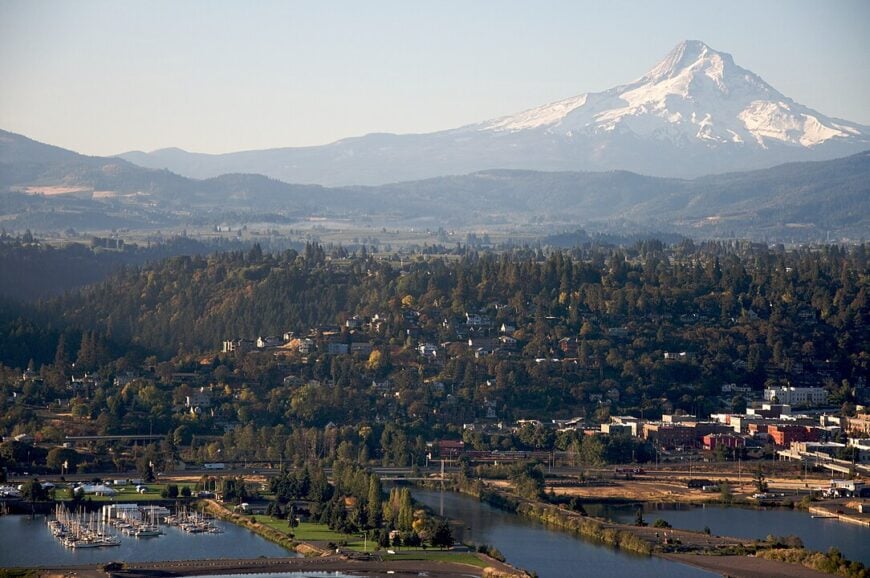
Hood River blends orchard-dotted hillsides with wind-whipped riverbanks, but venture a few miles east and you’ll find the Gorge’s most iconic waterfall hikes. My favorite is Starvation Creek State Park, where a cluster of four falls—including 220-foot Starvation Creek Falls—awaits just steps from the parking lot.
After a sweaty trek, downtown’s pFriem Family Brewers supplies river-view tables and citrusy IPAs that taste like liquid sunshine. The seasonal Hood River Fruit Loop tempts with pear cider and lavender fields, perfect for non-hiking hours.
Kite-surfers slice the Columbia while snow still clings to Mount Hood, reminding me this town lives in perpetual motion. Yet on a quiet trail under a waterfall’s mist, I always find the tranquil side of Hood River that headlines rarely mention.
Hood River offers 3-4 bedroom homes priced between $820,000 and $850,000, a scenic town that offers both luxury living and easy access to stunning waterfalls.
Where is Hood River?
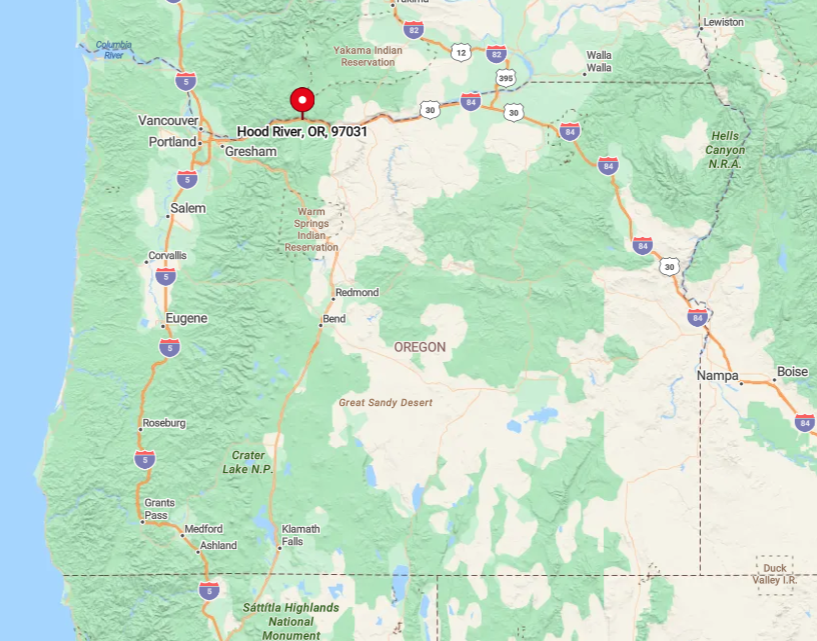
Hood River hugs I-84 on the Oregon side of the Columbia River Gorge, 60 miles east of Portland and 30 miles west of The Dalles. The river’s wind tunnel effect creates world-class kite-surfing, while Mount Hood’s glaciers feed the area’s many waterfalls.
Visitors can arrive by car, Columbia Gorge Express bus, or the Mount Hood Railroad excursion train. From downtown, a lattice of highways—U.S. 30, Highway 35, and I-84—fan out to trailheads in every direction, making waterfall chasing almost too easy.





